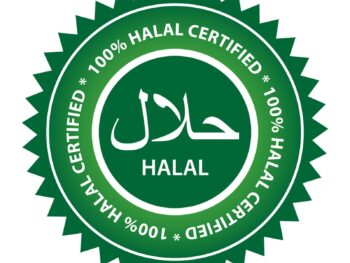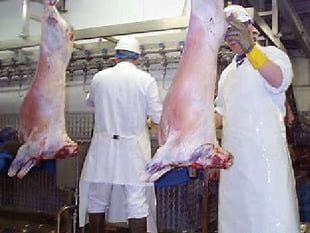Understanding and Preventing Foot-and-Mouth Disease in South African Cattle
A Strategic Guide for Farmers, Exporters, and Livestock Professionals
🔬 Disease Dynamics & Impact
Foot-and-mouth disease (FMD) is one of the most economically devastating livestock diseases in the world. It affects cloven-hoofed animals—cattle, pigs, sheep, goats, and various wildlife species—and spreads rapidly through direct contact, contaminated feed, equipment, and even airborne particles under certain conditions.
In South Africa, FMD is not just a veterinary concern—it’s a national economic threat. The disease disrupts local meat supply chains, halts exports, and undermines investor confidence in the livestock sector. For communal farmers and smallholders, an outbreak can mean total market exclusion and financial collapse.
Key Impacts of FMD:
- Reduced productivity: Infected animals suffer from fever, blisters, lameness, and weight loss. Milk yield drops significantly, and recovery is slow.
- Long-term herd damage: Even after recovery, animals may experience chronic hoof issues and reduced fertility.
- Export bans: Countries with strict import standards immediately suspend trade with regions experiencing outbreaks.
- Quarantine costs: Movement restrictions and biosecurity enforcement create logistical and financial burdens for farmers.
🧬 What Causes FMD?
FMD is caused by the Aphthovirus, a member of the Picornaviridae family. What makes this virus particularly challenging is its diversity: there are seven distinct serotypes—O, A, C, SAT1, SAT2, SAT3, and Asia1. Immunity to one serotype does not confer protection against others, which complicates vaccine development and disease control strategies.
In South Africa, the SAT serotypes (Southern African Territories) are most prevalent, especially SAT1 and SAT2. These strains are endemic in certain wildlife populations, particularly African buffalo, which act as reservoirs and complicate eradication efforts.
📍 South Africa’s FMD Landscape: A History of Outbreaks
South Africa has faced multiple FMD outbreaks over the past two decades, each with escalating consequences. The most recent wave, as of September 2025, includes:
- 274 unresolved outbreaks across five provinces
- KwaZulu-Natal accounting for 180 active cases
- Limpopo, Mpumalanga, and North West also reporting new clusters
- ▶ Watch: How the Outbreak Unfolded
- Spread linked to informal livestock auctions and unregulated movements
These outbreaks have triggered national concern, prompting the formation of an Industry-Government Task Team to coordinate response efforts, rebuild vaccine production, and enforce movement controls. - 🎥 South Africa scrambles to contain foot-and-mouth disease outbreak
- This video captures the scale and urgency of the recent outbreak at a major feedlot.
🚨 Legal & Ethical Responsibilities
Under South Africa’s Animal Disease Act of 1984, Section 35, farmers and livestock handlers are legally obligated to report any suspected cases of FMD. Failure to do so is not just unethical—it’s a prosecutable offense.
What You Must Do:
- Report immediately to your local State Veterinarian
- Isolate suspected animals and halt all movement
- Cooperate with inspections and sampling procedures
- Avoid private treatment or concealment, which can worsen outbreaks and lead to legal action
Transparency is not optional. It’s the cornerstone of disease control and market recovery.
🧪 How FMD Spreads
Understanding transmission is key to prevention. FMD spreads through:
- Direct contact with infected animals
- Contaminated feed, water, and equipment
- Footwear, clothing, and vehicle tires
- Airborne particles in humid conditions (especially in confined spaces)
- Wildlife reservoirs, particularly African buffalo
Once introduced, the virus can survive in the environment for weeks, especially in cool, moist conditions. This makes biosecurity protocols non-negotiable.
🛡️ Biosecurity Protocols: What Farmers Must Implement
To protect your herd and your livelihood, implement the following measures immediately:
🚧 Farm Entry Controls
- Install disinfectant troughs for vehicles at all entry points
- Require footbaths and hand sanitizers for all visitors
- Keep a visitor logbook with contact details and purpose of visit
🐄 Quarantine & Stock Management - Quarantine new arrivals for at least 21 days
- Request full health documentation and vaccination records
- Avoid sourcing animals from informal auctions or unverified suppliers
🧼 Hygiene & Equipment - Disinfect feeding troughs, water containers, and tools daily
- Use dedicated clothing and boots for farm work
- Train staff on symptom recognition and reporting protocols
📦 Feed & Supply Chain - Source feed from certified suppliers
- Avoid shared feed storage with neighboring farms
- Monitor for signs of contamination or spoilage
🌍 Export & Market Access: The Bigger Picture
FMD doesn’t just affect individual farms—it reshapes South Africa’s position in global trade.
Current Export Challenges:
- Beef exports to China, the EU, and GCC countries are suspended due to active outbreaks
- Smallholder farmers are excluded from formal markets due to lack of certification
- Processing plants face reduced throughput and increased inspection costs
Strategic Response: - Over 900,000 vaccine doses have been procured from Botswana
- A new traceability system is being piloted to certify disease-free zones
- The Industry-Government Task Team is working to restore South Africa’s FMD-free status
For exporters, this is a critical moment to align with certified suppliers, reinforce cold chain integrity, and prepare for re-entry into premium markets. - Export & Market Access,
📣 Farmer Voices: What’s at Stake
In interviews conducted across KwaZulu-Natal and Limpopo, farmers expressed frustration and fear:
These stories underscore the importance of vigilance, transparency, and community cooperation.
🧭 Strategic Recommendations for Stakeholders
Whether you’re a farmer, exporter, processor, or policy advisor, here’s what you can do:
For Farmers:
- Join local biosecurity training programs
- Invest in quarantine infrastructure
- Build relationships with certified suppliers and vets
For Exporters: - Audit your supply chain for compliance
- Support traceability initiatives
- Engage with the Task Team to stay informed
For Policymakers: - Accelerate vaccine production and distribution
- Enforce movement controls at auctions and transit points
- Fund public awareness campaigns in rural areas
📚 Resources & Reporting Channels
- State Veterinary Services: www.dalrrd.gov.za
- FMD Hotline: 0800 123 456
- Biosecurity Toolkit: Available via AgriSA and provincial departments
- Reporting Portal: www.fmdreport.co.za
🧠 Final Thoughts: Prevention Is Power
FMD is not just a veterinary issue—it’s a strategic challenge that demands coordinated action across the livestock value chain. South Africa’s ability to recover its FMD-free status depends on the choices made today: to report, to protect, and to prepare.
Whether you manage a communal herd or export-ready feedlot, your role is vital. Biosecurity is not a luxury—it’s the foundation of resilience, reputation, and revenue.




